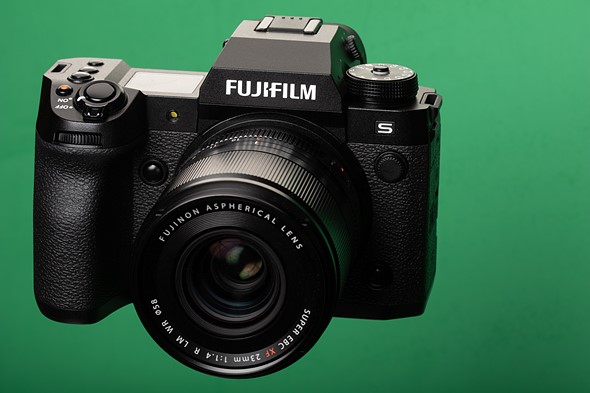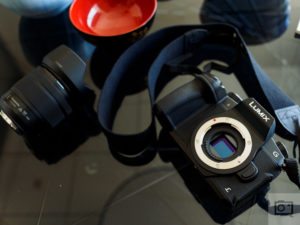
Going professional is a big step. Not only does it mean you can partly (or totally) fund your lifestyle on the back of your image-making, but it also means that you are responsible for delivering the goods to a client, magazine or publication that could be seen by thousands of people.
This is serious stuff, so upgrading your kit to a include a professional-spec camera that can take the knocks of everyday professional life while still delivering impressive image quality and video is very important. Of course, photographers shoot different genres and a camera that may be suitable for, say landscapes, may not be right for something like sports photography. So, to set you on the right track, we’re suggesting a pro camera for each genre…
Landscape photography - Pentax K-1 MkII:-
Landscape photography means lots of travel, and an equally large amount of time in often-poor weather conditions. Large resolution and epic build quality are a must, and the K-1 MkII has all bases covered. The DSLR offers a 36-megapixel full-frame sensor and features superior weather-sealing, so you won’t need to worry about standing out in the field when a rain shower bursts above you. With dual SD card slots, photographers can make instant back-ups or extend shooting time before needing to change cards.
The Pentax K-1 is a pro landscape camera that won't break the bank.
A tiltable 3. 2-inch LCD sits on quirky stilts which allow the screen to be positioned to help awkward low/high compositions and built-in GPS can geotag your locations, so you can plot and revisit them or share the data with fellow landscape photographers.
Impressively, the Pentax K-1 MkII features built-in 5-axis image stabilisation, meaning every lens you pair with the camera benefits from this technology and helps keep shots sharp. The camera is also incredible value, enabling those who need two bodies to purchase a second camera without breaking the bank.
Street photography - Fuji X-T3:
The secret to successful street photography is to carry a lightweight camera that will deliver impressive image quality without drawing unnecessary attention. Fuji’s X-T3 not only ticks all of these boxes but is also one of the best-looking cameras on the market. Packing a 26-megapixel APS-C sensor, the X-T3 also has no Anti-Aliasing (AA) filter, so images should be sharper at the increased risk of moire. Images can be lined up using the 3-inch tilting screen and the X-T3 has a rapid burst rate of 20 frames per second.
Fuji's X-T3 is a wise choice for street photography.
With an ISO range stretching to 12800, street photographers shouldn’t have any issues in low light and, if the weather on the streets turns bad, the X-T3 features a weather-sealed body. With built-in Wi-Fi, users can transfer images to a smart device and upload on the go, plus there’s a 425-point autofocus system and two SD card slots to further underline why this camera would be good in the hands of a pro street photographer.
Macro photography - Olympus OM-D E-M1 MkII:
Macro photography is a technically challenging genre and, to do it professionally, you need some special kit. Luckily, the Olympus’ OM-D E-M1 MkII is indeed a special camera and offers macro photographers a professional-spec option that can make the most of close-up photo opportunities. Weighing just 574g, the compact E-M1 MkII offers a 20-megapixel Micro Four-Thirds sensor, 5-axis image stabilisation, a 3-inch vari-angle screen and allows for a rapid burst mode rate of 15 frames per second.
The Olympus OM-D E-M1 MkII is small, but perfectly formed.
The body is well build, and easily sturdy enough for professional use, plus there is no shortage of Micro Four-Thirds lenses from Olympus, Panasonic and third-party manufacturers such as Samyang and Sigma. However, the coolest feature for Macro photographers is the automatica focus stacking feature, which combines frames taken with different depths of field to create one image that is sharp from front to back.
Wildlife photography - Canon 1DX MkII:
Canon’s flagship camera is one of the most complete cameras ever made and is purpose-built for professional wildlife photography. The 20-megapixel full-frame camera features a built in vertical grip and enhanced weather-sealing, making it well suited for use in poor weather conditions. The shutter life expectancy is rated at 400,000 actuations and images can be reviewed on the large, 3. 2-inch LCD, but one of the coolest features of this camera is the burst rate, which is good for 16 frames per second - fast enough to captured those split-second moments that makes all the difference in wildlife photography.
Canon's flagship 1DX MkII is popular with pro wildlife photographers.
The 1DX MkII makes use of a sophisticated 61-point autofocus - all of which can be used at f/8, meaning the full AF system will work when lenses are paired with teleconverters to get you closer to your wildlife subjects.
Sports photography - Sony a9:
Sony’s a9 is one of the newer professional sports photography cameras, but a quick look at its specifications reveal why so many pros are picking up this mirrorless wonder. Sporting a 24-megapixel full-frame BSI-CMOS sensor, the a9 offers an insane 693-point autofocus system and can capture up to 20 frames per second - more than fast enough to capture those crucial, goal-scoring, ball catching, photo finish moments that sport photography thrives on. A 5-axis image stabilisation system helps keep shots steady and focus points can be set using the touch-sensitive 3-inch tilting LCD.
Sony's a9 is fast, accurate and built to take the knocks of pro use.
The a9 really does have it all for professional sports photographers, including built-in Wi-Fi, NFC and Bluetooth so images can be quickly transferred, along with an expandable ISO range of 50-204800 and dual storage card slots. All of this cutting-edge tech is housed within a weather-sealed body that tips the scales at just 673g.
Travel photography - Nikon D850:
Travel photographers often search for lightweight options when planning their journeys, but for professional use, a change of direction is often needed. Packing a camera that offers bulletproof build quality is a must for professionals because you don’t want anything to go wrong when you are miles from a camera repair centre. Nikon’s D850 fits the bill perfectly because, not only does it offer a 45. 7-megapixel full-frame sensor to deliver stills images high in quality, but it can also capture 4K video if you wish to capture some movie content when on a travel photography assignment, too.
Nikon's D850 is a great all-rounder for stills and video.
The weather-sealed D850 is a great all rounder, with a 3. 2-inch tilting, touch-sensitive LCD, a 7 frames per second burst rate and a vast expandable ISO range of 32-102400. The D850 boasts a 153-point autofocus system, dual memory card slots and features Wi-Fi, Bluetooth and NFC technology, along with offering an 8K timelapse option, too.
Portraiture photography - Sony a7RIII:
Professional portrait photographers need high-resolution cameras that can operate both in the studio and on location. This is why there can’t be many better cameras for this job than Sony’s a7RIII. Packing a beefy 42-megapixel BSI-CMOS full-frame sensor, the a7RIII also offers 5-axis image stabilisation - perfect when you are shooting handheld portraits in low light that would normally suffer from camera shake. Despite the high resolution, the a7RIII is no slouch and can capture sequences of portraits thanks to the 10 frames per second burst rate. Thanks to solid build-quality and weather-sealing, the a7RIII is just at home in the rain as it is in a dry studio and the camera makes use of a advanced 425-point autofocus system that also features Face Detection.
Capture epic detail with the a7RIII's 42-megapixel sensor.
. digitalrev.com2019-1-25 03:00






















